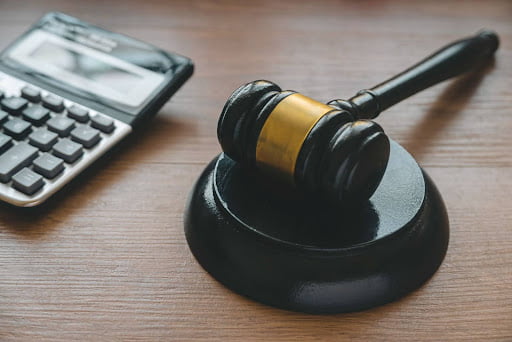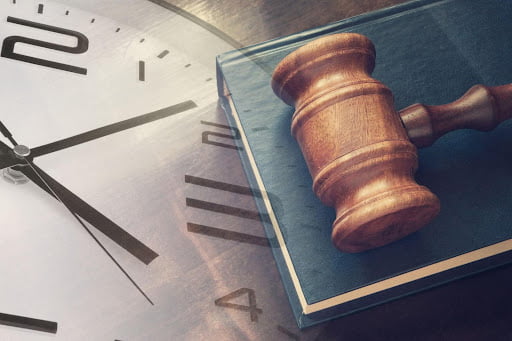
The Short Answer:
Personal injury settlement negotiations typically involve a strategic back-and-forth between your attorney and the insurance company. Your lawyer starts by submitting a detailed demand letter supported by evidence such as medical records and proof of lost wages. From there, both sides exchange offers and counteroffers. Attorneys use facts, documentation, and the potential for trial as leverage to help secure full compensation—often without needing to go to court.
Key Takeaways
- Lawyers begin by submitting a demand package that includes medical bills, lost income, and documentation of pain and suffering.
- Insurance companies often respond with low initial offers to test how eager you are to settle.
- Attorneys use legal arguments, strong evidence, and the threat of trial to strengthen your position during negotiations.
- While most cases resolve before trial, our experienced lawyers are always ready to escalate if necessary.
- Our skilled legal team knows how to deal with delays, liability disputes, and undervaluation tactics often used by insurers.
Table of Contents
- What Are Settlement Negotiations in a Personal Injury Case?
- The Injury Settlement Process
- Strategies Injury Lawyers Use to Maximize Settlements
- Common Challenges in Settlement Negotiations
- When Do Most Injury Cases Settle?
- Do You Need a Lawyer to Negotiate a Settlement?
- Get Help Negotiating a Fair Injury Settlement
What Are Settlement Negotiations in a Personal Injury Case?
In personal injury law, a settlement negotiation is the process where both parties, typically the injured person’s attorney and the insurance company, attempt to resolve the claim without going to court. This involves discussing the facts of the case, reviewing evidence, and exchanging offers to agree on a fair amount of compensation.
The main goal of settlement negotiations is to reach a resolution efficiently, avoiding the time, cost, and uncertainty of a trial. When handled strategically, this process allows injured victims to recover damages while maintaining control over the outcome.
The Injury Settlement Process
Step 1 – Investigation and Demand Letter
The process begins with a thorough investigation. Your attorney will gather key evidence such as medical records, police reports, witness statements, and documentation of lost wages. This information forms the foundation of your case.
Once the facts are in place, your lawyer prepares a demand letter: a formal document that outlines your injuries, damages, and the compensation you’re seeking. It’s essentially the first official “ask”, backed by full documentation to support your claim.
Step 2 – Initial Offer from the Insurance Company
Insurance companies often respond with a lowball offer. This tactic is common—they’re trying to contain costs and see how willing you are to compromise early.
At this stage, do not accept the first offer without careful evaluation. Accepting prematurely could mean settling for far less than your case is actually worth.
Step 3 – Counteroffer and Ongoing Negotiation
Your attorney will respond with a counteroffer based on solid evidence and case law. The back-and-forth can involve:
- Clear communication: Lawyers are strategic with how and when they respond.
- Supporting resources: Expert opinions, timelines, and damage summaries often play a critical role in justifying your claim’s value.
These exchanges continue until both sides reach a middle ground or until one side decides to escalate.
Step 4 – Reaching a Settlement or Preparing for Trial
Sometimes, negotiations lead to a fair settlement. Other times, the insurance company refuses to budge. When that happens, your attorney may recommend preparing for trial.
Being ready to go to court gives your legal team important leverage, often prompting insurers to settle rather than risk losing in front of a jury.
Strategies Injury Lawyers Use to Maximize Settlements
Personal injury attorneys use a variety of tactics to strengthen your case and push for a fair settlement. These strategies are designed to demonstrate both the legal and human impact of your injuries—compelling the insurance company to offer a higher amount.
1. Legal Positioning: Liability, Causation, and Damages
Attorneys build a strong legal foundation by clearly establishing who was at fault, how their actions caused your injuries, and the full scope of your damages. This positioning is key—if there’s little room for dispute, insurers are more likely to settle rather than risk a loss in court.
2. Citing Similar Verdicts and Settlements
Lawyers often reference outcomes from similar cases to support your claim. These benchmark verdicts and settlements help frame your demand as reasonable and consistent with how similar cases have been resolved.
3. Highlighting Pain and Suffering
The emotional toll of an injury can be just as impactful as the financial loss. Attorneys present pain and suffering through detailed narratives, photos, and personal testimony to make your experience real and persuasive during negotiations.
4. Factoring in Client Goals and Risk Tolerance
Every client is different. Some want to resolve the case quickly; others are willing to go to trial if needed. Attorneys tailor their negotiation approach based on your goals and comfort level with risk, helping you make informed decisions at each stage.
Common Challenges in Settlement Negotiations
While many personal injury cases settle without going to trial, the negotiation process is rarely smooth. Several common obstacles can stand in the way of a fair resolution:
1. Disputed Liability or Shared Fault
In Tennessee, you can only recover damages if you are less than 50% at fault. Insurance companies often attempt to shift blame or claim the injured person is partially responsible. This modified comparative fault argument can reduce compensation, depending on the percentage of fault assigned to each party.
2. Disagreements About Injury Severity or Causation
Insurers may downplay the seriousness of your injuries or suggest they weren’t directly caused by the accident. These causation disputes often arise when there’s a pre-existing condition or a delay in seeking treatment.
3. Delay Tactics by Insurance Companies
One of the most frustrating challenges is unnecessary delay. Carriers may drag out the process, hoping that financial pressure will force you to settle for less than you may deserve. An experienced attorney from The McMahan Law Firm will know how to push back and keep your case moving forward.
4. Undervaluing Claims Due to Inexperience
If an adjuster lacks experience, they may misjudge the value of your claim. This can lead to unfair offers or missed opportunities for higher compensation.
When Do Most Injury Cases Settle?
Most personal injury claims are resolved through settlement, often without ever going to trial. However, the timing of a settlement can vary depending on the circumstances of the case.
- After the Demand Letter: Once your attorney sends a detailed demand package, the insurance company may respond with an offer, opening the door to early negotiations.
- During the Pre-Litigation Phase: Many cases settle before a formal lawsuit is filed, especially when liability is clear and damages are well-documented.
- After Filing a Lawsuit (Before Trial): If a settlement isn’t reached informally, negotiations often resume after legal proceedings begin. Depositions and discovery can influence how both sides value the case.
- Shortly Before Trial: As the trial date nears, the risk and cost of going to court can prompt one or both sides to settle.
- During or After Trial Discovery: In some cases, settlement happens mid-trial or even after discovery concludes, especially when new information strengthens one side’s position.
Do You Need a Lawyer to Negotiate a Settlement?
Technically, you can negotiate a personal injury settlement without an attorney. But doing so often leads to lower compensation. Insurance companies have teams of adjusters and lawyers whose job is to minimize payouts, and without legal support, it’s easy to get outmatched.
- Legal Knowledge: An attorney understands the laws surrounding liability, damages, and procedural timelines, helping you avoid costly mistakes.
- Leverage: Insurance companies take your case more seriously when a skilled attorney is involved. The threat of trial alone often leads to better offers.
- Documentation Strategy: Knowing what evidence to gather and how to present it can significantly impact your case value. Lawyers build organized, persuasive demand packages that insurance companies can’t easily dismiss.
- Negotiation Experience: Injury lawyers are trained to handle the back-and-forth negotiation process. They know when to push, when to pause, and how to time their responses for maximum impact.
If your goal is to get a fair settlement while avoiding unnecessary stress, having a lawyer on your side can make a measurable difference.
Get Help Negotiating a Fair Injury Settlement
You don’t have to go through this process alone. Our team is here to handle the legal side so you can focus on your recovery.
We offer:
- A free case review. No strings attached.
- A contingency fee structure, so you don’t pay unless we recover compensation for you.
- Easy ways to get in touch: Contact us through our secure form.
We’re here to handle the hard part so you can heal.
















